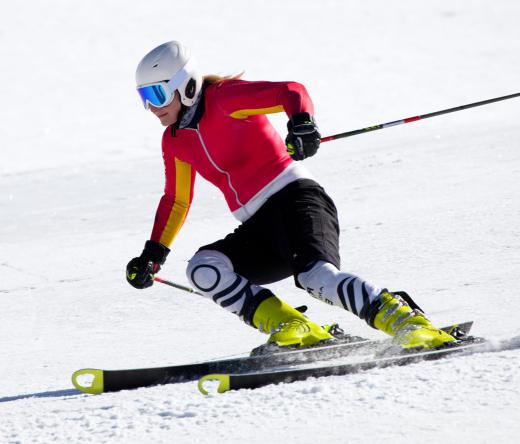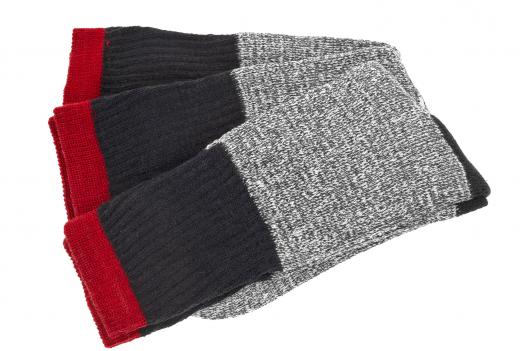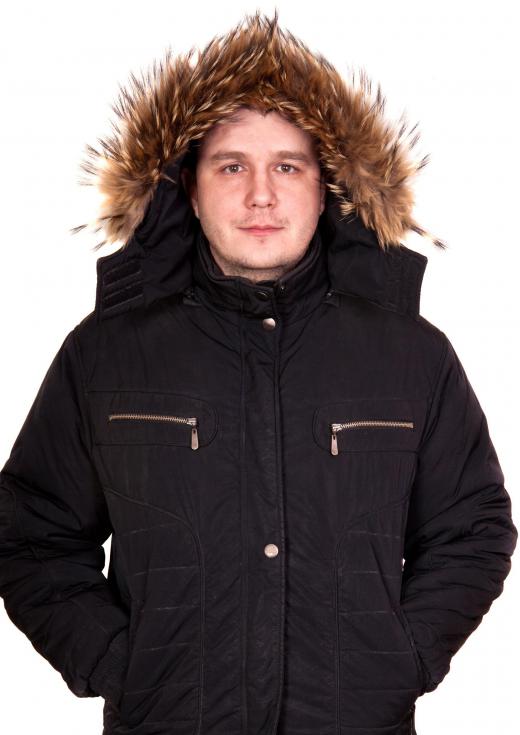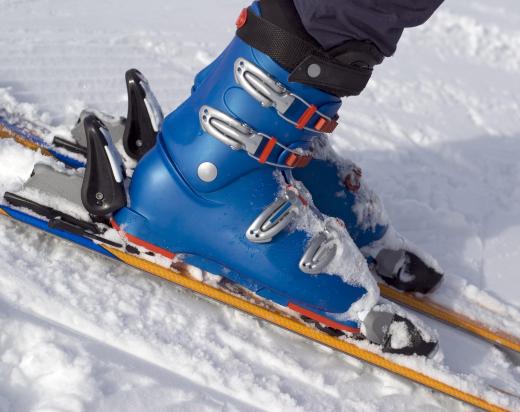Ski clothes are designed to keep skiers warm while out on the slopes. Many companies also place a focus on fashion so that skiers can look good while being warmly insulated. There are a number of choices in ski clothes on the market, depending on whether skiers prefer natural fibers, comfort, fashion, or a mixture of these elements. The most important thing to remember when selecting ski clothes is that they should fit one correctly and be warm.
The choice of fibers for ski clothes is varied. Some companies make ski clothes out of synthetics, which tend to dry more quickly, and are relatively easy to wash. Synthetic fibers can also be used to make a warm, dry barrier to protect skiers from cold, wet situations. Synthetic fibers are preferred for outer layers because they can be made more waterproof.
Natural fibers such as cotton, silk, and wool can be used as well. When selecting natural fibers, be aware that cotton tends to hold water. Wool is highly insulating and water repellent, although it may cause skin irritation.

Ski clothing starts with underlayers, and long underwear is recommended to provide all over insulation. Many companies make silk long underwear or silk synthetics which feel good against the skin and wick away moisture. If possible, feel the texture of undergarments before purchasing them, to make sure that they will feel comfortable against the skin. If you select low profile undergarments, they will make your overall form less bulky on the slopes. When you are trying on overlayers, be sure and wear your undergarments for proper fit.

When it comes to outer layers of snow apparel, there are a number of options. On the legs, most skiers like to wear snow or ski pants, which are usually made from synthetic fibers. Ski pants are also lined with several layers to ensure warmth. Snow pants will keep your legs warm and dry while out on the slopes. Most ski pants are also designed to work well with ski equipment including boots, and have pockets and tabs to accommodate lift tickets and other needed items. If you are unsure about the fit of a set of ski pants with boots, ask if the store has boots you may try on with the pants.

On top, a heavy jacket such as a ski jacket or ski parka can be worn over a long sleeved shirt. Many are made entirely from synthetic fibers, although some skiers like to wear a wool sweater underneath. Some are available lined with down, which is a lofty and insulating material which may settle with time. Ski clothes for the upper body should allow freedom of movement while providing a good insulating layer.

Over these garment, a variety of scarves, hats, and earmuffs can be worn. These ski clothes can be fashion statements or purely functional, depending on the desires of the skier. On the feet, remember to wear thick, comfortable socks. Synthetic fibers may not allow your feet to breathe, so you may want to consider silk or wool. When purchasing ski boots, remember to wear thick socks with them to check for fit.

Ski fashion is fundamentally about being waterproof, comfortable, and sporting, although it is still possible to look stylish while bundled up. A number of companies specialize in making ski clothes in a wide variety of colors and sizes for skiers of all levels of need and experience. Bright colors stand out on the slopes, making a skier distinctive, and easy to find in an emergency situation. Tapered garments flatter the body and make the skier more aerodynamic. Many ski clothing manufacturers include faux fur lining, stealthy hidden pockets, and other features to make their clothing more appealing to consumers.
When caring for your ski clothes, choosing the best laundry detergent sheet is essential. These detergents offer a convenient and effective way to keep your ski apparel clean and ready for your next adventure on the slopes. Look for eco-friendly options that are tough on stains yet gentle on your clothes, ensuring that your ski outfits remain in top condition. Just as your ski attire is designed for both function and fashion, using the right detergent sheets can help preserve the quality and vibrant appearance of your ski clothes, ensuring they perform and look their best every time you hit the snow.
